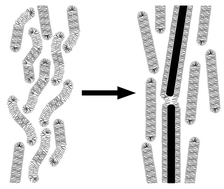Filament formation in carbon nanotube-doped lyotropic liquid crystals†
Abstract
By introducing

* Corresponding authors
a Martin-Luther-University Halle-Wittenberg, Institute of Chemistry - Physical Chemistry, von-Danckelmann-Platz 4, Halle, Germany
b Division of Physics and Astronomy, Graduate School of Science, Kyoto University, Kitashirakawa-Oiwakecho, Sakyo-ku, Kyoto, Japan
c
Seoul National University, Graduate School of Convergence Science and Technology, Suwon-si, Gyeonggi-do, Korea
E-mail:
jan.lagerwall@lcsoftmatter.com
Fax: +82 (0)31 888 9155
Tel: +82 (0)31 888 9165
By introducing

 Please wait while we load your content...
Something went wrong. Try again?
Please wait while we load your content...
Something went wrong. Try again?
S. Schymura, S. Dölle, J. Yamamoto and J. Lagerwall, Soft Matter, 2011, 7, 2663 DOI: 10.1039/C0SM01225D
To request permission to reproduce material from this article, please go to the Copyright Clearance Center request page.
If you are an author contributing to an RSC publication, you do not need to request permission provided correct acknowledgement is given.
If you are the author of this article, you do not need to request permission to reproduce figures and diagrams provided correct acknowledgement is given. If you want to reproduce the whole article in a third-party publication (excluding your thesis/dissertation for which permission is not required) please go to the Copyright Clearance Center request page.
Read more about how to correctly acknowledge RSC content.
 Fetching data from CrossRef.
Fetching data from CrossRef.
This may take some time to load.
Loading related content
